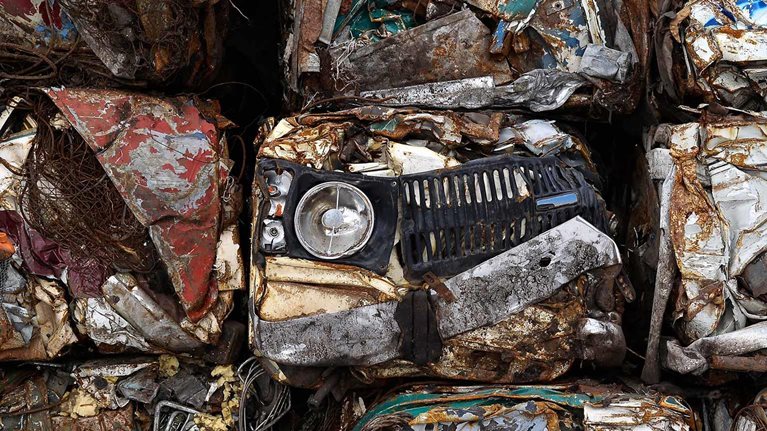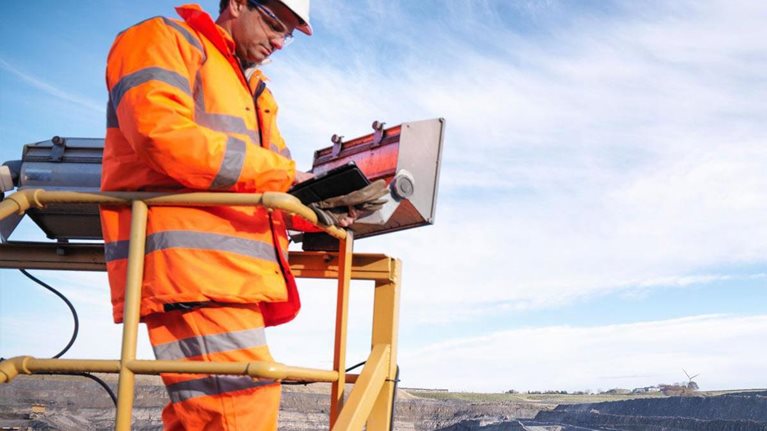Today, 3-D printing is a very small part of the metals industry, but it is growing rapidly and this market is expected to be worth as much as $10 billion by 2030 to 2035.1 Already, a number of healthcare and aerospace companies have adopted the technology. Some are running pilots to see how 3-D metal printing can contribute to their operations while others are using 3-D printers to produce metal prototypes in-house.
Stay current on your favorite topics
We expect the current low-scale experiments to shift to broader industrial adoption within the next five to ten years, especially at the high end of the metals market. By significantly lowering production costs and lead times for a variety of metal parts, 3-D printing has the potential to reshape the industry structure.
The main benefits of 3-D printing are a shorter value chain, cost and time reductions through elimination of assembly steps, greater customization and design freedom, and minimal waste. But the technology still has significant challenges to overcome. These include the high costs of metal powder and 3-D printers for large-scale production, as well as significant constraints on the dimensions of printed parts. Additionally, most printers cannot mix materials within one item. However, R&D activities by corporations and academics are rapidly addressing these limitations.
Industry players can enter this promising market in several ways: powder production, 3-D printing end products, servicing 3-D printer operations, and manufacturing 3-D printers. For the metals value chain, perhaps the biggest opportunity lies in producing high-performing metal powders or innovative products with enhanced properties. As the technology increasingly takes hold, we expect powder producers and creators of the product designs to hold the greatest power in the value chain, with those in the middle increasingly squeezed.
At a time of high volatility in the cost of raw materials, metal manufacturers are eyeing 3-D printing with intense interest—and for good reason. By significantly lowering production costs and lead times for a variety of metal parts, 3-D printing has the potential to transform the value chain in metal production and reshape the industry’s power dynamics.
The technology, which works by layering rather than eliminating material to create a shape (hence it is also known as additive manufacturing), has several important selling points. First, it requires only three major steps: metal production, powder production, and product printing (with some finishing). Additionally, 3-D printing largely eliminates waste and expands the available design options, allowing manufacturers to adapt products to use less material, incorporate improved mechanical properties, avoid assembly steps, and create new geometries.
The process also makes small production batches more cost-effective, broadening the range of manufacturing options and enabling better customization to end-user needs. For example, a company can locate a 3-D printer at the product’s final destination, such as the maintenance department for the production of spare parts, lowering both logistical challenges and the high cost of ordering complex one-off parts from suppliers.
While plastics have garnered most of the attention to date, it is metals that have been the fastest-growing 3-D–printing category since 2012.2 Given the increasing need for metal producers to differentiate themselves through their cost structures, supply chain performance, or products, we believe it is only a matter of time before the technology becomes a transformative force in the industry. It has the potential not only to revolutionize product manufacturing but to create new ecosystems of innovation and entrepreneurship.
Fully realizing this promise will take time, however. In speed of high-volume production, cost of raw materials, quality consistency, and breadth of end-product sizes, 3-D printers still lag behind conventional methods. Nevertheless, 3-D printing is rapidly advancing on all those fronts.
Currently, 3-D printing comprises only a few basis points of the metals market, but analysts expect that its growth trajectory—currently akin to rates usually associated with tech markets rather than metals—will take annual revenues to the region of $10 billion by 2030 to 2035.3 Already, the technology is being used to produce nickel, nickel alloys, and other high-value metals. Industries such as healthcare and aerospace are at the forefront of embracing 3-D printing to gain the precision, low weight, and fast turn-around their customers require—and for which those customers are willing to pay extra. As the technology matures and costs drop, we expect adoption to spread.
Key advantages of 3-D printing for metals players
There are four core benefits of 3-D printers over traditional metal production.
Shorter value chain. 3-D printing generally requires only three steps. The first is producing the metal itself using conventional smelting and casting processes. The second step is the production of the raw material for the printer, which takes the form of either powder or wire (see “3-D metal printing today—a technology overview”). The 3-D printer then prints the metal component by melting the powder or wire to create the desired shape, with some finishing steps often required afterwards.

Conventional production stages such as hot rolling, cold rolling, cutting, bending, welding, and assembly become, to a large degree, obsolete (exhibit). Consequently, there is little need for standard inventory methods, complex logistics, and lengthy supply chains. Provided there is a printer available, production can start immediately.

Low waste. The conventional process of milling, stamping, and otherwise processing large sheets of metal causes extensive waste of material. In contrast, 3-D printers melt only the powder or wire required to build the component’s skeleton and structure layer by layer. Manufacturers can then remove any excess powder from the printer and reuse it. Consequently, scrap rates for 3-D printing are only 1 percent to 3 percent, and are expected to eventually approach zero.4 The process is also less labor-intensive and has a much lower environmental impact thanks to its elimination of the emissions attendant with traditional manufacturing and transport through the supply chain.
Greater design freedom. The ability to sidestep many design and manufacturing constraints is one of the biggest advantages of 3-D printers. They can circumvent assembly steps and create previously impossible structures, such as a metal rib cage that was custom-printed for a cancer patient. The printers can also reduce the amount of material required for a part by, for example, printing part interiors as nonsolid, bone-like structures that nevertheless deliver the same functional specifications as conventional parts. Manufacturers can 3-D–print complex shapes with often improved properties, as they have started to do with lightweight car seats and airplane belt buckles.
The quality of most 3-D–printed parts is fast approaching that of their conventionally made counterparts. For wrought items, the quality is already comparable to products manufactured through traditional methods. On milled objects, 3-D printing is getting close but sometimes still requires additional processing, such as heat treatment or hardening, to achieve the necessary physical properties. For highly heat-resistant superalloys such as the ones used in jet engine manufacturing, 3-D printing is gaining acceptance due to savings in time and cost over conventional machining.
Would you like to learn more about our Metals & Mining Practice?
Aside from opening up new design possibilities, 3-D printing also enables fast production and iteration of prototypes. If testing identifies the need for design improvements, implementing such changes requires nothing more than uploading a new design to the printer.
Cost effectiveness at small scale. Today, most metal-manufacturing facilities are set up for large-scale production, and few efficient solutions exist for small batches or products. Consider a spring, only a few centimeters in size, that triggers air-bag inflation during crashes. The typical production batch for the metal in conventional manufacturing exceeds 200 tons—vastly more than the annual demand for this tiny part in any type of airbag. For such small production lots, 3-D printing is generally much more affordable.
In addition, a 3-D–printing site can be set up quickly and often with less investment than a conventional metal-production facility, which might require building power plants, roads, and bridges. For 3-D printing, the main investment is the printer itself, prices for which start at a few thousand dollars (though they can go up to $2 million). There is no need to build expensive milling and refining capabilities, and the 3-D printers can be located at or near the products’ final destination or be transported to a new location when needed. The ability to rapidly establish just-in-time production makes 3-D printing particularly appealing to those manufacturing small batches of highly customized parts who want to scale that production as needed. In theory, every part produced can be fully customized at little additional cost aside from that incurred during postprocessing.
Technological obstacles to broader adoption
Today, conventional manufacturing is still the preferred choice for most mass-produced metal products because it is more cost-efficient and better adapted to high-volume production. Current 3-D printing technology also has some important limitations. Parts larger than 30 cm² are difficult to produce using existing 3-D printers, and most printers cannot mix materials within one item. Some makers of 3-D printers have announced successful experiments in mixing materials during printing, but no such printer is yet commercially available. Naturally, all these shortcomings are the focus of intense research at all levels of the value chain.
However, the biggest hurdle to 3-D printing becoming a viable, large-scale production alternative is the high cost of printers and of metal powder. Powder production today is inefficient, partly because of its small scale and partly because as little as 50 percent of the atomized powder is of sufficient quality.5 The main reason for this low yield rate is irregular and inconsistent particle size. Most existing powder atomizers produce powders too coarse for many applications. The industry is working to improve the yield rate, which will help drive down the total cost and increase output of 3-D printing processes. Some tests by precious metals manufacturers indicate that yield rates above 90 percent are achievable,6 and we expect metal powder costs to come down in the near future. Printer prices are also dropping, a trend that the technology’s broader adoption will support.
Currently, aerospace, medicine, and other industries whose products demand high precision and entail high cost, are leading the way in embracing 3-D printing. These industries require rigorous customization (in artificial hip joints, for example) or short lead times (as with jet engine turbine blades), which makes 3-D printing particularly suitable to their needs.
The fact that 3-D printers can use less material than conventional manufacturing is also a major selling point in applications such as turbine blades, which are made from expensive metals and benefit from low weight. But as the technology improves and costs drop, we believe adoption of 3-D printing will spread to sectors such as oil and gas, automotive, robotics, and consumer products.

How 3-D printing may transform the value chain
The shift over the coming few years will be gradual. Within the next five to ten years, we expect 3-D printing to penetrate into the high end of the market, particularly in the manufacturing of material-heavy components out of expensive metals. For the time being, 3-D printing is unlikely to push aside traditional production methods in commodity metals products.
However, as the technology matures and adoption spreads, 3-D printing promises to transform the power dynamics in the metal-manufacturing value chain. The key growth enablers will be the availability of material, material science know-how, and production performance. The players near the front of the value chain (such as powder producers) and the end (design creators, likely within or affiliated with end customers) will hold the greatest influence as they will define the properties and production costs of the components. Powder producers that differentiate themselves by developing unique metal powders and dominate particular metal-printing segments will be in a position to set the costs of production, exerting considerable power over the market and the value chain. Design owners may be able to counter the resulting price pressure to some degree by pooling their business.

The growing importance of steel scrap in China
We expect the industry to make rapid improvements in the cost and quality of metal powder. Base metal producers of steel, nickel, copper, and aluminum with pyrometallurgical processes are in the best position to enter the powder production market. By raising the quality of current atomizer technology, they can develop proprietary platforms that they then scale globally, and in time set up direct distribution to end customers, eliminating much of the current value chain. They could even recycle or exchange material between production sites or their customers if required. In addition, these players will be the natural partners for end customers on material science questions, because both the performance of specific metal powders and the “printability” of high-performance materials will be fundamental to the competitiveness of the end products. In short, such companies will be able to create end-to-end ecosystems, from the raw materials to end-customer relationships.
As happens in many disruptions, it is the middlemen who will suffer most as the distance between producer and user shrinks. With 3-D printing eliminating most of the supply- chain steps from the process, the players in the middle are at risk of becoming either obsolete or being left to handle the least profitable steps in the process.
Assessing 3-D printing’s potential for your business
The following questions can help every company in the metal value chain determine the impact 3-D printing is likely to have on its business.
How soon will 3-D printing affect my market? The answer depends largely on your business model, your position in the value chain, and the end markets that your products target. The technology will first penetrate markets where short timelines are critical (such as jet engine turbine blades). Next, the technology will infiltrate the production of small parts (less than 30 cm² in size) made out of expensive material because it can significantly reduce the amount of material needed. Beyond those niches, adoption will depend on the speed with which 3-D printing becomes cost-competitive with existing alternatives, but we expect low-value, mass-market products to be among the last affected.
While 3-D printing has been embraced already by the aerospace and medical-device industries, within three years we expect the technology to penetrate all industries where speed of delivery is critical, such as oil and gas or mining. Use on a larger scale in machinery or transportation sectors is at least five years away.
What is the best entry point for my business? There are four clear opportunities in the value chain to capitalize on 3-D printing. Companies can focus on powder production, printing end products, servicing printer setups, or developing and selling 3-D printers. The development of high-performance printing powders is a particularly promising niche for metal producers, though 3-D printer manufacturers are already active in this arena. We will likely see specialized players emerge in all these areas.
If we want to use 3-D–print products, should we “make” or “buy”? Various factors should guide the decision whether to develop 3-D printing capability in-house or use services offered by others. For example, do you want to deploy your limited resources to build a new capability? Will either choice give you an important edge in time to market? How critical is protection of your IP and pipeline information? Companies should also take into account the technology curve of 3-D printing. Right now, the technology is near the steepest point of its development curve, when much is still changing. In some cases, it may be wise to wait until the technological evolution plateaus at the phase of incremental improvements before making a significant investment.
How deeply should we jump in? There is wide diversity in how companies are choosing to address this question. Some are running pilots to see how 3-D printing can contribute to their operations. By experimenting with the 3-D printing of prototypes and spare parts, they can test the technology with little risk, while cutting back on the storage costs and time lags of ordering spare parts externally.
Others are already making big bets on additive manufacturing in hopes of emerging as leaders in this nascent arena. Alcoa recently invested $60 million in advanced 3-D–printing materials and processes, and opened a metal powder plant in Pittsburgh that will produce industrial volumes of aluminum, nickel, and titanium powders for 3-D–printing customers, particularly in aerospace.7 The company is also investing in R&D to develop new powders and to improve printing speeds and reduce costs.
Building up capacity and developing pricing for a new market presents challenges for new entrants. We recommend starting with one market segment in which you holistically explore all opportunities 3-D printing offers to reshape the value chain.
Will we need to adapt our processes? In additive manufacturing, getting the initial design right is critical to fully leveraging the technology’s advantage. Parts specifically designed for this new process tend to be more successful than ones where traditional manufacturing is simply switched to 3-D printing—especially since redesigning parts to use less material can bring additional functional benefits and cost savings. But adopting 3-D printing on a significant scale requires some organizational changes and a more agile supply chain to cater to faster innovation cycles.
As 3-D printing of metals matures, it is likely to significantly disrupt many parts of the current value chain. We expect the change to be binary: either 3-D printing will prove to be the better alternative and, as a result, will sweep through the industry, as smartphones swept aside most other telecommunications devices; or it will fail to meet its promise and remain a narrow niche. However, if the technology overcomes the remaining challenges confronting it today and the supply chain adapts to 3-D–printing processes, we expect the structural advantages of this production method to make it the uncontested choice for most metals manufacturers.


